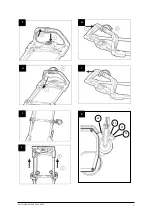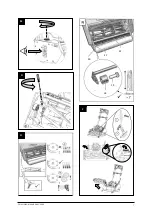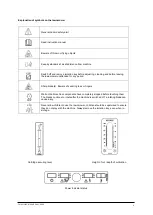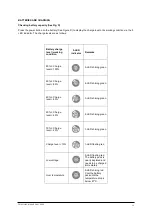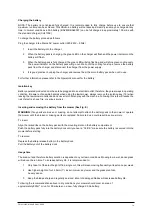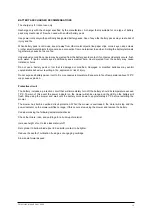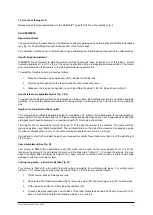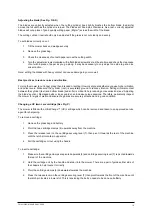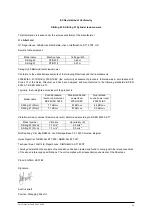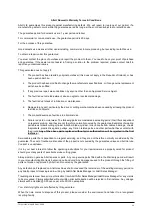
F016J13542-A ISSUE 28-01-22 SE
19
Maintenance
WARNING
: Do not at any time make any adjustment to the lawn mower without first stopping the motor, removing
the isolation key and waiting for the blade to stop rotating.
Note: To ensure long and reliable service, carry out the following maintenance regularly:
-
Regularly check for obvious defects such as a loose, dislodged, or damaged blade, loose fixings, and
worn or damaged components.
-
Check that covers and guards are undamaged and correctly fitted.
-
Carry out necessary maintenance or repairs before using.
-
Clean the exterior of the machine thoroughly using a soft brush and cloth. Do not use water, solvents, or
polishes.
-
Remove all debris, especially from around the motor.
If the mower should happen to fail despite the care taken in manufacture and testing, repair should be carried out
by an Approved service agent.
Cylinder / Reel and Bottom Blade / Bed Knife sharpening
The cylinder (reel) and bottom blade (bed knife) can be re-sharpened. This is recommended every 2-3 years or as
required. Blunt or dull blades will adversely affect cutting performance and battery life. Please contact your local
dealer for information. You can search for your nearest registered dealer on-line at www.allett.co.uk/allett-dealer-
locator
Cleaning and Storage
Clean the mower, battery and charger with a soft dry brush or cloth. If the grass box or interchangeable cutting
cartridge are removed from the lawnmower, they may be cleaned with water from a hose. Lubricate the cutting
cylinder (reel) with a light oil to displace any water after cleaning and when storing at the end of the season.
Remove the battery and isolation key, store both machine, battery, and charger in a safe, cool and dry place,
avoiding areas of high humidity.
At the end of the season do not store the battery in the mower. Keep it in shady, cool, and dry conditions.
Disposal
Product, accessories, and packaging should be sorted for environment-friendly recycling.
The plastic components are labelled for categorised recycling.
Do not dispose of electrical power tools, batteries, or chargers into household waste!
According to the European Directive 2002/96/EC on waste electrical and electronic equipment and 2006/66/EC on
waste batteries it is EU law that power tools which are no longer suitable for use must be separately collected and
sent for recovery in an environmentally friendly manner.
The following toxic and corrosive materials are in the batteries used with this lawnmower: Li-ion - Toxic
When disposing of damaged or end of life batteries cover the battery terminals with heavy duty adhesive tape to
avoid; injury, risk of fire, explosion or electric shock.
All toxic materials must be disposed of in a specific manner to prevent contamination of the environment. Before
disposing of damaged or worn-out Lithium-ion battery packs, contact your local waste disposal agency, or the local
Environmental Protection Agency for information and specific instructions. Take the batteries to a local recycling
and/or disposal centre, certified for Li-ion disposal.


